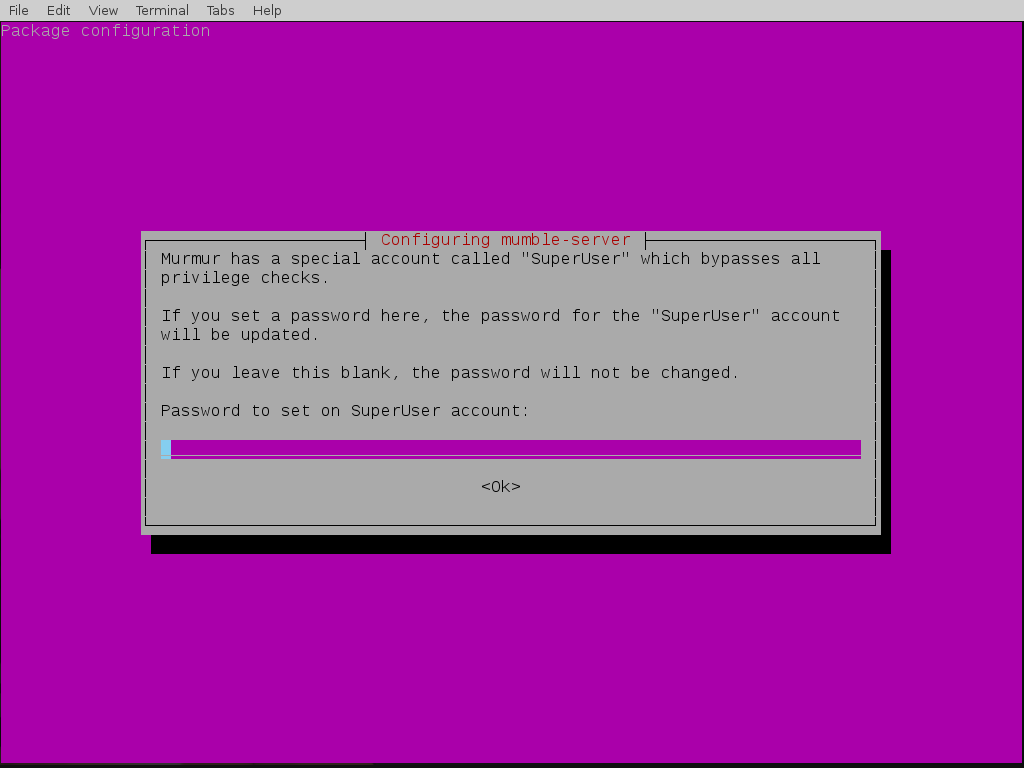

The mumble-web repo already contains a Dockerfile, so no need to create our own. To test the admin pages just open your browser and go to the address of your docker host followd by the port exposed for mumble-django, in my case it looks like this įinally time for the last service Our web frontend, mumble-web Would you like to create one now? (yes/no): yes You have installed Django's auth system, and don't have any superusers defined. To add more servers, run this command again. Successfully finished Servers and Players detection. This will start the new service and restart the old if any changes has been made to it.īefore we can test the admin pages we need to create the database and create a admin user # docker exec -it mumble-django /bin/bash -c "python /usr/src/app/pyweb/manage.py syncdb"Īpply all migrations: admin, contenttypes, sites, auth, sessionsįound new Murmur instance 1 on bus 'Meta:tcp -h murmur -p 6502'. When all is done, start the server docker-compose up -d Just make sure that the mumble_ice:/opt/mumble/ice is not changed. So first create a folder mkdir -p ~/mumble-server/mumble-djangoĪnd then the Dockerfile # mumble-django/DockerfileĬOPY IceEncodingVersion.patch /opt/mumble-django Once again I decided to build my own docker image. Test the server using the client of your choice, if it is working we move on to the mumble-djanog admin page. Use the docker-compose command to start the server docker-compose up -d Murmur needs a settings file before we can start, in my case the file is /srv/mumble/murmur/murmur.ini this is what we need to add welcometext="Welcome to " To change the persistent storage path it's the same as with the ports, change the first part of the : separated paths volumes:īut don't change the mumble_ice:/opt/mumble/slice volume, it is there to share the Murmur.ice file with mumble-django.

To change the exposed ports for the mumble-server just change the first number in the 64738:64738 ports instruction. And because we created a mumble-net network for our services the mumble-django service will run on the same network and will be able to access the 6502 port on the murmur server. Notice I don't expose the 6502 port here, it is only exposed by the container. Then we create the server service, I wont go into all the details. Over to the docker-compose file version: '2.0'įirst I create a separate network for our mumble containers. Now that was the actual building of the docker image file, now we need to be able to start the mumble server. The 6502 port is used for the Internet Communication Engine (ICE) used by mumble-django and the 64738 is the mumble port for VoIP. Two ports need to be exposed, 64738 for both TCP and UDP and then 6502 for TCP. I like Debian and there is a package for mumble-server, and by appending the -slim tag we get the smaller image. RUN mv /opt/mumble/murmur.ini /opt/mumble/murmur-default.ini RUN adduser -disabled-password -no-create-home -gecos '' murmur

RUN tar xjf /tmp/murmur-static_x86-$.tar.bz2 -strip-components=1 -C /opt/mumble So to the actual Dockerfile for the murmur server # murmur/Dockerfile I called the subfolder murmur just because the actual mumble server is named murmur mkdir -p ~/mumble-server/murmur First create a subfolder to store the Dockerfile and maybe some more files for mumble-server later on. I decided to create my own docker container for the mumble-server.

Lets start with the mumble server, because both mumble-web and mumble-django depends on the mumble server.įirst we create a folder to store all our files mkdir ~/mumble-server All of them running in their own separate docker container. I went to the process of creating a mumble server with mumble-web as fronted, mumble-django as admin portal and murmur for the actual mumble server.


 0 kommentar(er)
0 kommentar(er)
